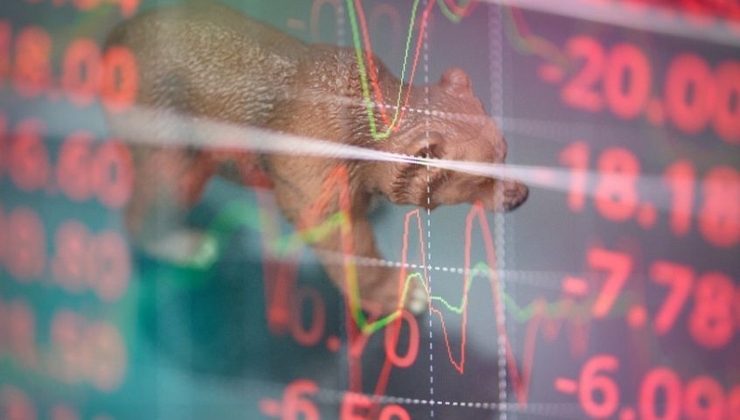Analysis
With markets analysing how each piece of economic data impacts central bank thinking on future policy changes and what may evolve at the next central bank meeting, the likes of the USD, NAS100 and Gold will likely key off what’s priced into interest rate markets (such as the fed funds future) vs the outcome and the tone of the statement or press conference.
So, as each individual tier 1 piece of economic data is released – for example, US CPI, US non-farm payrolls or wage data, these events now more than ever really need to be considered for our trading.
A core component of our risk assessment
Given a core component of our trading process is to manage the risk around our open positions, we need to assess if an event will create movement and how that could affect our P&L – the distance to stop would also be a clear consideration.
Some will also consider whether we even have an edge trading the event as a directional trade – for example, a trader decides to buy the AUDUSD just ahead of the data dropping on a strong belief that US CPI will come in under consensus expectations – subsequently, interest rates hike expectations are reduced (US bond yields fall), and the USD subsequently sells off.
This is where options trading really comes into its own, as people think about distributions and the outcome of probabilities – in fact, this way of thinking is how we should always think about trading and not just in our assessment of event risk. However, if we have a strong belief that the event could cause significant volatility, we must decide:
- Do I want to close my exposure ahead of an event that is outside of my control?
- Rather than fully close the position, should I part reduce my exposures?
- Where should my stop be placed? Typically, the greater the movement the further the stop is from the market, while my position size is then reduced to account for the increased risk.
- Should I initiate a position on a belief of an outcome (in the data) and I can capture a directional view, and I can close out quick enough to capture the move?
A framework to think about event risk
To look at this more scientifically, we can work to get a framework to analyse the distribution of potential outcomes. This is how I would look at an event:
- Implied volatility – we send out a week ahead playbook to clients each Monday with the implied level of volatility (priced by the options market). In here we offer a volatility matrix, which gives us a sense of whether the market is priced for movement over that period – we look at that level of volatility within its 12-month range. If the expected movement priced by the market is high, then this is the trader's red flag to manage consider the question above.
- Positioning – the best guide is to get your hands on investment bank flow reports, but this is difficult for retail traders to obtain – so, traders often look at the weekly CFTC/TFF report which looks at positioning in futures and options holdings from speculators – while this is a small percentage of the total daily flow, we can extrapolate into the context of broader market positioning, which is typically in derivatives (e.g swaps) and spot FX markets - the intel can be found readily on Twitter or websites such as Myfxbook or Forexlive - we’re really looking for extremes that could push the balance of probability towards one direction - for example, if the market is very long of USDs then we could feasibly see a far bigger move lower if the data point comes in below expectations than the move higher if it were to beat expectations.
- Interest rate expectations – I look at TradingView or Bloomberg, but traders can also look at the CME Fed watch tool - this is essential for understanding the potential movement in a market for the outcome of data – if the market has fully priced a rate hike then ironically we could see an outsized sell-off in the asset if the data misses expectations or even comes inline.
- Economist’s expectations – our economic calendar shows the median estimate from a wide range of economists – while I tend to look at rates pricing more intently, this will guide the event playbook.
- Price action and technicals – we consider if the market been trending and trading one way into an announcement. If we marry this with the pricing in the interest rate market, then it could re-enforce the idea that we could get a ‘buy the rumour, sell the fact’ once the market hears what it was already expecting.
Event risk now genuinely matters for all traders of all timeframes – discretionary and systematic – with the market trying the understand the near and medium-term path for central banks. These data points and central bank speeches offer us clarity that needs to marry with what’s priced and what the market is positioned for – if the market needs to radically adjust this is where we can see rapid and explosive moves.
So as we move into the eye of the storm, consider this framework as a way of thinking about the distribution of outcomes, both in terms of how to think about a risk event and whether one wants to trade the possibilities.
Related articles
Ready to trade?
It's quick and easy to get started. Apply in minutes with our simple application process.
The material provided here has not been prepared in accordance with legal requirements designed to promote the independence of investment research and as such is considered to be a marketing communication. Whilst it is not subject to any prohibition on dealing ahead of the dissemination of investment research we will not seek to take any advantage before providing it to our clients.
Pepperstone doesn’t represent that the material provided here is accurate, current or complete, and therefore shouldn’t be relied upon as such. The information, whether from a third party or not, isn’t to be considered as a recommendation; or an offer to buy or sell; or the solicitation of an offer to buy or sell any security, financial product or instrument; or to participate in any particular trading strategy. It does not take into account readers’ financial situation or investment objectives. We advise any readers of this content to seek their own advice. Without the approval of Pepperstone, reproduction or redistribution of this information isn’t permitted..


